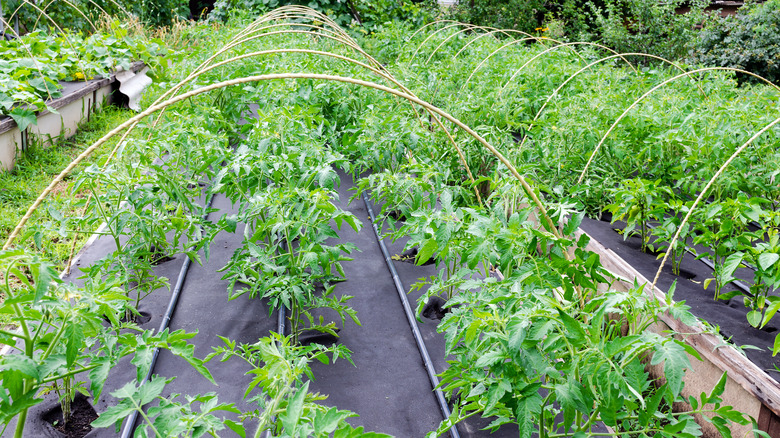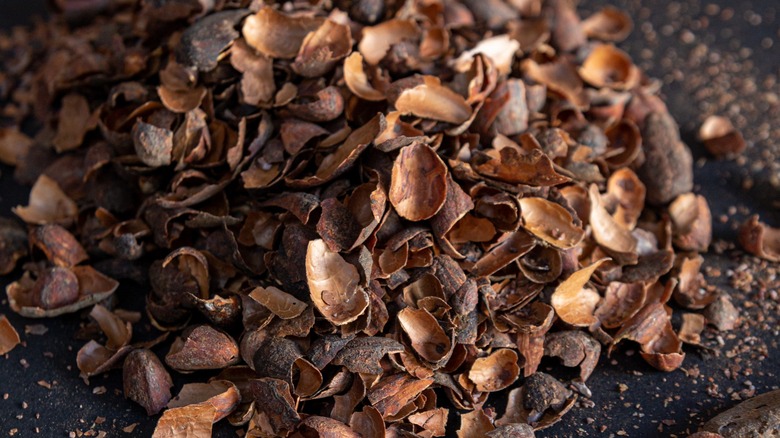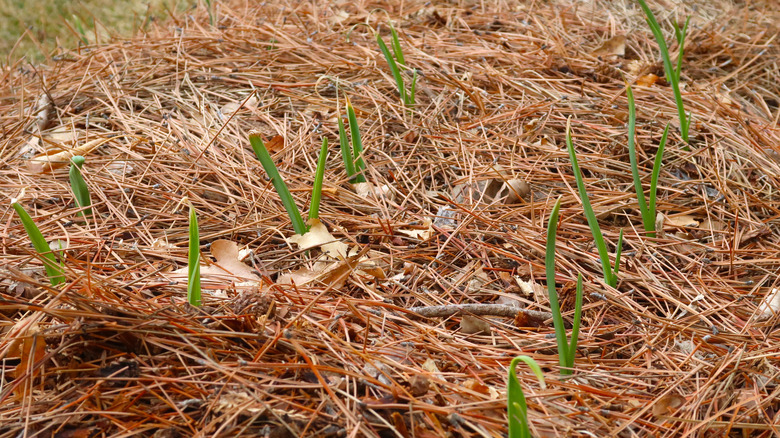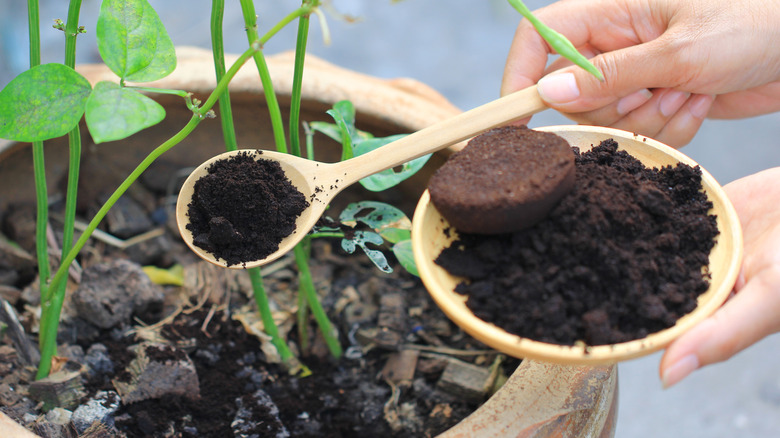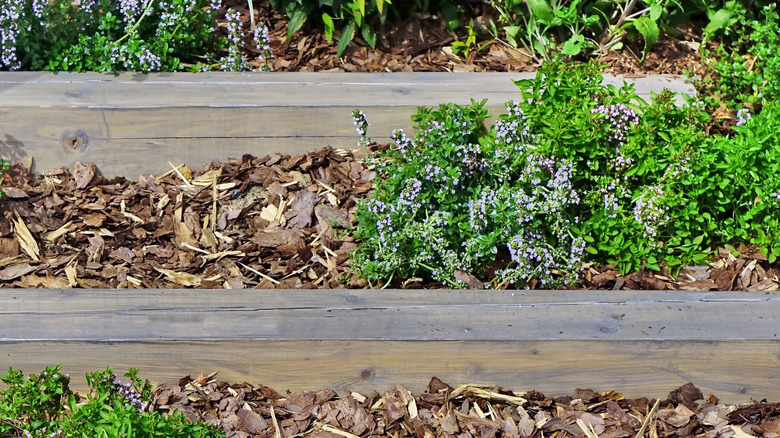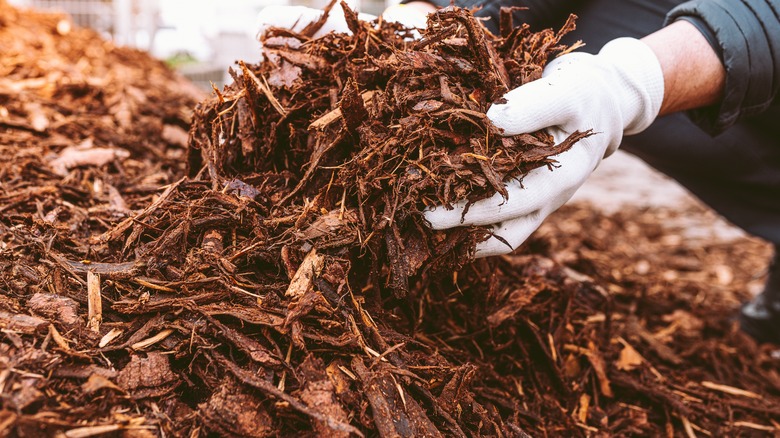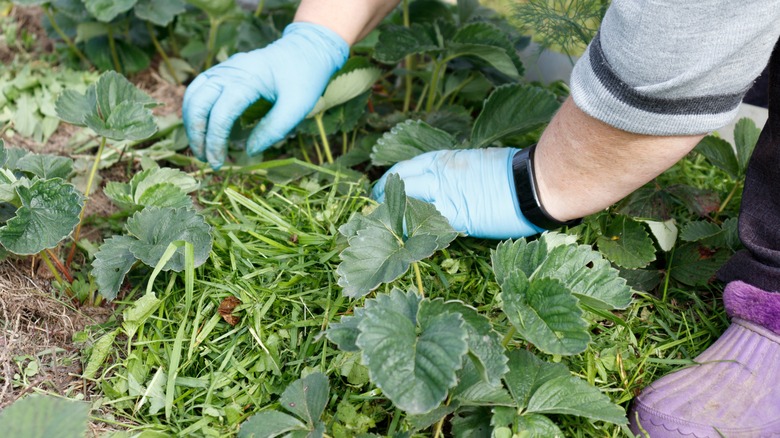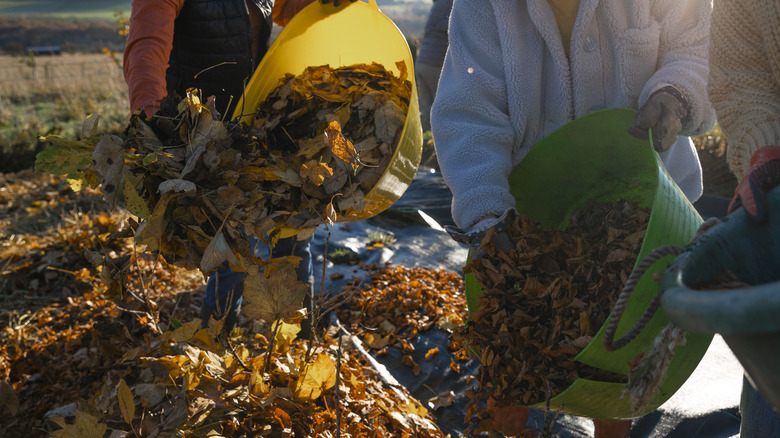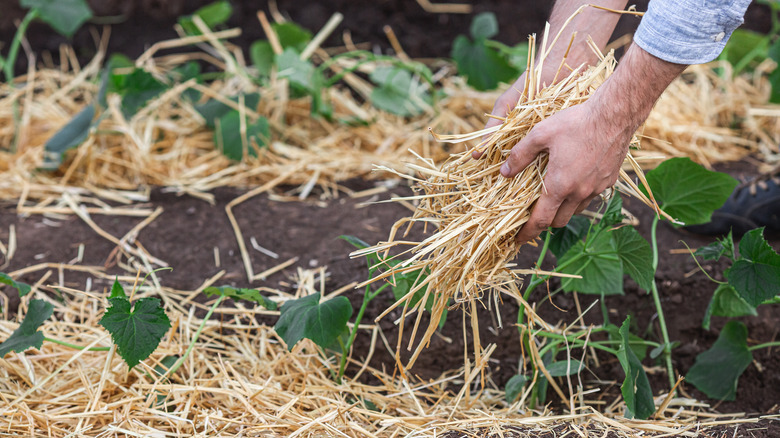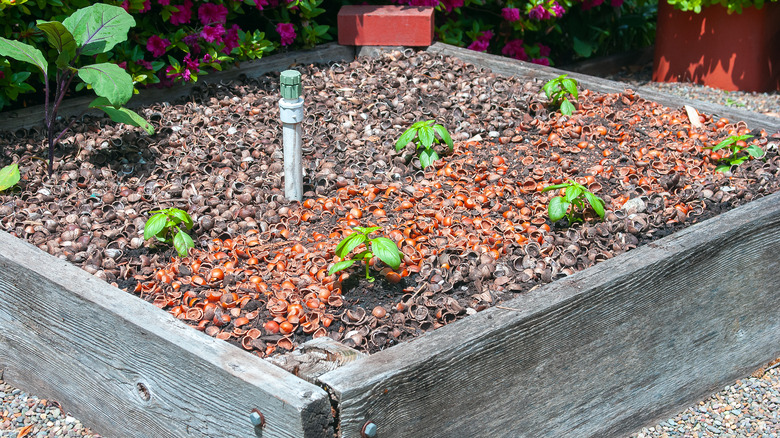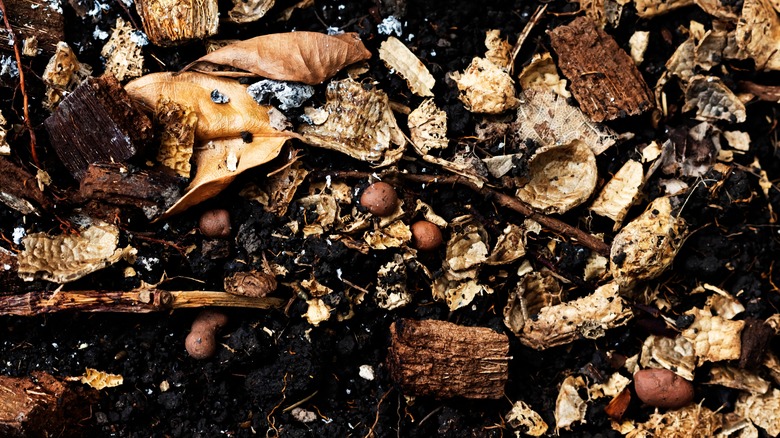10 Natural DIY Weed Barrier Alternatives To Landscaping Fabric
Weeds are one of the last things you want to find in your garden, let alone spend hours of backbreaking labor to uproot them. To stop them from sprawling in the yard, many gardeners turn to weed barrier fabric. The fabric is usually spread across the entirety of the bed, and holes are cut to allow desired plants to break through unobstructed. Unwanted plants, like invasive weeds, are concealed under the fabric and deprived of sunshine and oxygen; they die out, stopping them from overrunning your garden.
However, weed barrier fabric may not be best for your garden, and professional gardening services advise against using it, even when topped off with natural mulch: for one, it needs to be replaced every few years, just like most fabric items. This can be costly if you hire professional landscapers and laborious if you're a DIY gardener. Additionally, while it temporarily prevents weed growth, it doesn't enrich the soil or benefit your wanted plants; it can even prevent helpful biological processes from occurring. So, instead of opting for artificial weed barrier fabric, you may want to look for all-natural mulch to work as a barrier. Wondering if your coffee grounds will make a good gardening ingredient, or if there's a good reason to save up your old peanut shells? In this roundup, we've found 10 of the best weed barrier fabric alternatives and eco-friendly mulch options.
1. Cacao shells
We are eternally grateful to cacao beans for the gift of chocolate, but did you know that cacao shells can also make excellent mulch and help reduce weeds? Applying a layer of dried cacao hulls over the top of your soil has some other wonderful benefits, too. Its natural aroma is heavenly and warm, rather like, well, chocolate, and it has a rich, deep brown color that looks gorgeous in any garden. Plus, it adds nutrients to the soil as it breaks down, giving you richer soil and healthier plants.
2. Pine needles
Pass under any pine tree, and you'll find plenty of shredded pine needles. These prickly spines are excellent for going over garden beds and prevent weeds from sprouting up from the soil while still allowing plenty of space between them, which is necessary for proper soil aeration and for your desired plants to break through without obstruction. Pine needles can also turn the soil acidic, which makes them ideal for acidic soil-loving plants. Just gather up some dried pine needles and layer them around your garden beds.
3. Coffee grounds
We are always grateful for the coffee bean and the many mornings (and afternoons) it saves. But once you're done making your cup of joe, don't toss out those coffee beans. Instead, use spent coffee grounds as an all-natural mulch. Beyond adding nitrogen to the soil, coffee beans also repel cats and attract plant-loving earthworms. But don't add sopping wet coffee grounds to the garden, as this can cause mold. According to Dr. Chalker-Scott, use a thin layer of coffee grounds, then top it off with a coarse mulch such as wood chips (via the University of Arizona).
4. Wood chips
Wood chips are a very popular choice for mulching, and do well at suppressing weeds. They're all-natural and widely available at any hardware store, plant nursery, or farm shop. You can even contact your local arbor to see if they have any free wood chips available! Be sure to choose nice, large wood chips, and never sawdust, as finer shredded wood materials can blow away or mat together when wet. Wood chip fragments protect the topsoil from immediate evaporation, and are heavy enough to push any weed growth below the surface. As they break down, they deliver nutrients into the soil.
5. Tree bark
You can also opt for tree bark as another organic mulch. While wood chips can contain wood from any part of a tree, from the internal wood of the trunk to the external wood of the branches, bark is exclusively made from, well, tree bark. This works similarly to the wood chips and is a popular choice for gardeners. One key benefit is that you can buy bark from only specific trees if you have a particular color in mind for your garden. Bark decomposes slower, which is good for longevity but means the nutrients don't reach the soil as quickly as wood chips.
6. Mower clippings
Put your lawn mower clippings to good use as an organic weed barrier. Grass clippings have oodles of plant-loving nutrients and are easy to collect if you have a lawn mower with a clipping bag. Lawn clippings can be packed down to create a solid barrier and prevent weeds from sprouting, but they are still breathable and won't block water from draining downward. It is advised to use dry grass clippings, as wet ones can cause clumping and deprive the soil of water and air, but be cautious about using super dry grasses.
7. Fallen leaves
In the autumn, once the leaves have fallen and the leaf piles have been jumped through plenty of times, don't just bag them up and send them to the dump. Instead, use them as an organic weed barrier during the gardening season. They'll enrich the soil and plants as they break down, and you'll already have gathered them up. Plus, this is a great way to repurpose a totally free resource that would go to waste otherwise.
8. Straw
Straw, made of dried wheat stalks, can be an excellent natural weed barrier, just like lawn mower shavings. You can harvest and dry your own if you like living life in hard mode, or you can swing by any farm store and grab a large amount all at once and layer your garden beds with it. But be sure to avoid using hay in your garden because, though it's often used interchangeably with straw, a bail of hay often contains seeds that will grow into weeds, which is the opposite of a solution for your garden.
9. Hazelnut shells
Did you know that hazelnut shells can make for excellent weed barriers? Since they grow to protect nuts from all sorts of issues, nut shells are very hard and take a very long time to decompose. That's what makes them excellent as a long-lasting, all-natural mulch. And because they take such a long time to break down, they don't significantly impact the chemical composition of the soil, but help to regulate its temperature and moisture levels, and, of course, keep pesky weeds at bay. So don't discard those discarded hulls, or swing by your hardware store and buy a bag of them.
10. Peanut shells
Let's talk about another go-to edible nut: the peanut. Peanut shells do well as a mulch and weed barrier and help to aerate the soil. They also enrich the soil with key plant growth nutrients such as nitrogen, phosphorus, and potassium. However, there are some possible downsides, as some rodents love peanuts and may be drawn to your garden. Since you probably don't want to save up enough peanut shells to cover the garden, try mixing the hulls with a regular mulching mix.
